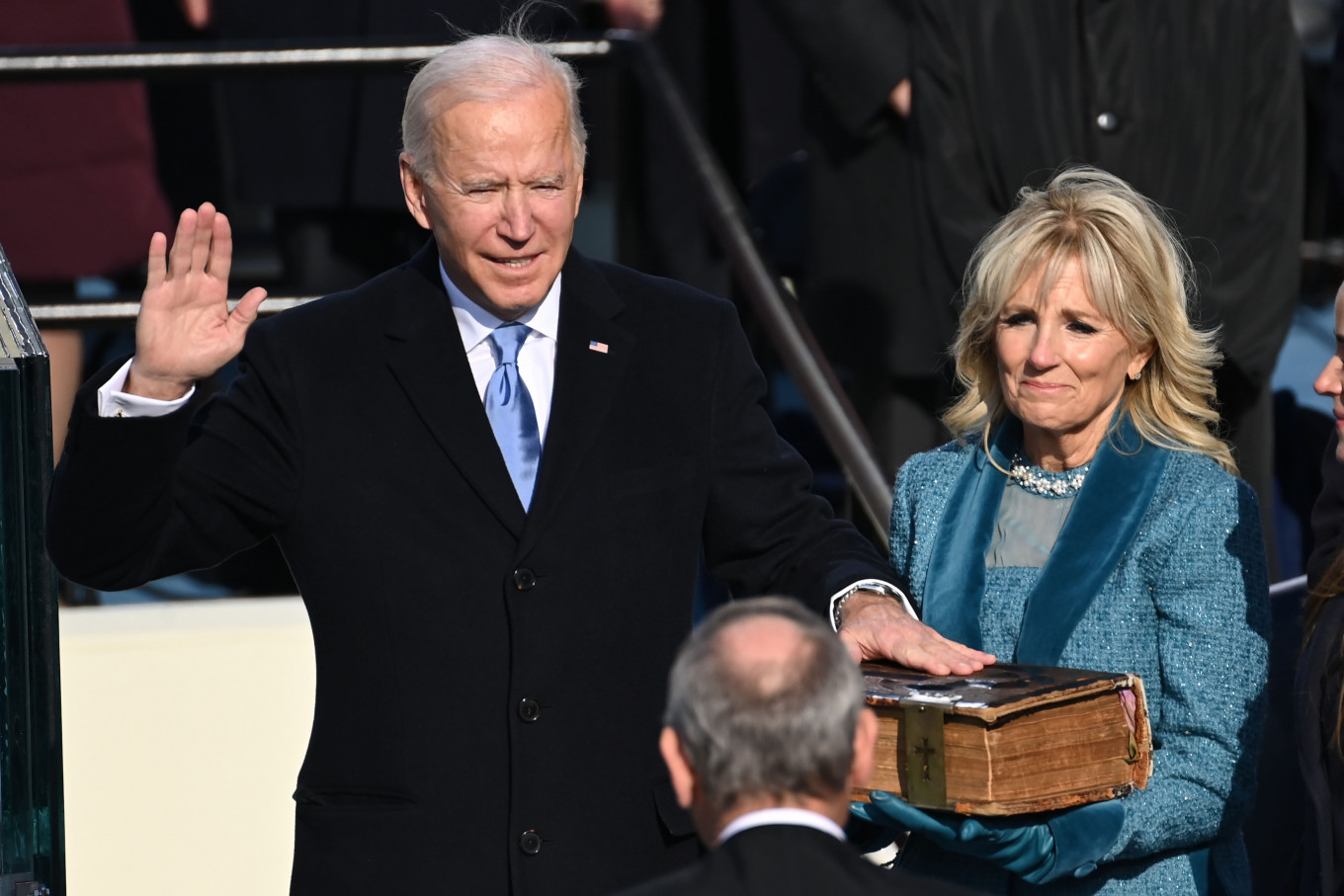Popular Reads
Top Results
Can't find what you're looking for?
View all search resultsPopular Reads
Top Results
Can't find what you're looking for?
View all search resultsBiden should lead on better climate solution than Paris Agreement
Yet, rejoining the Paris agreement will solve very little at a high cost.
Change text size
Gift Premium Articles
to Anyone
H
ours after being inaugurated as President, Joe Biden recommitted the United States to the Paris climate agreement. This is because climate change, according to Biden, is “an existential threat to our communities, economy, national security and environment.” To combat it, Biden wants to spend US$500 billion each year on climate policies, or $1,500 per US citizen.
Let’s get real. Climate change is a man-made problem. But Biden’s climate alarmism is almost entirely wrong. Asking people to spend $1,500 every year is unsustainable when surveys show a majority is unwilling to spend even $24 per year on climate. And policies like Paris will fix little at a high cost. Biden is right to highlight the problem, but he needs a smarter way forward.
The climate alarm is poorly founded. Take hurricanes. Last year, you undoubtedly heard that global warming made hurricanes “record-setting.” Actually, 2020 was above-average in the North Atlantic partly because of the natural La Niña phenomenon, and only record-setting in that satellites could spot more storms.
When measured by total hurricane damage potential, the 2020 North Atlantic was not even in the top ten. And almost everywhere else on the planet, hurricanes were far below average, including the Pacific, Southern and Northern hemispheres. Globally, 2020 ranked as one of the weakest hurricanes years in the 40-year satellite record.
We think 2020 was big on hurricanes because we read carefully curated stories where and when they hit, but we didn’t see stories about the many more places and times they did not.
This dynamic is why widespread climate alarm diverges from the decades of climate-economic research that shows the total impact of climate change is negative but manageable. The UN Climate Panel, the gold standard of climate science, tells us the total impact of climate change in the 2070s is equivalent to an average income reduction of 0.2-2 percent. Since the UN also expects everyone to be 3.63 times richer, global warming means we will only be 3.56 times as rich. That is a problem, but not Biden’s existential threat.
Yet, rejoining the Paris agreement will solve very little at a high cost. By the UN’s estimates, if all nations live up to all their promises (including Obama’s promises for the US), it will cut so little, it will reduce global temperature by less than 0.05 degree Celsius by 2100.
And Paris is costly, because it forces economies to use less or more expensive energy. Across many studies, the drag to the economies is $1-2 trillion in lost GDP every year after 2030. While achieving some good, each dollar of cost will only deliver about 11 US cents of long-run climate benefits.
While politicians also talk about job benefits, economic research shows that green spending will predictably increase green jobs. But because subsidies will be paid by higher taxes on the rest of the economy, an equal number of jobs will disappear elsewhere. In the United Kingdom, Prime Minister Johnson excitedly talks about 5 million new green jobs, while his advisers now warn him that 10 million other jobs could be at risk.
Many rich countries are now promising to make their economies carbon-neutral by 2050. There is only one nation that has done an independent cost estimate of net-zero, namely New Zealand. They found the average best-case cost is 16 percent of GDP. This translates to more than $5 trillion per year by mid-century for the US and similarly exorbitant costs for other nations. Such costs make these policies unsustainable in the long run.
Moreover, rich countries can achieve very little by themselves. Imagine if all OECD countries stopped all its CO₂ emissions today and never bounced back. This would be utterly devastating — COVID-19 lockdowns only reduced emissions by less than 10 percent. Yet, this would reduce global warming by the end of the century by 0.4 degree Celsius. This is because three-quarters of the 21st-century emissions will come from the rest of the world — especially China, India, Africa and Latin America. They are unlikely to accept slower economic growth to address a 2 percent problem 50 years from now.
Fortunately, there is a much smarter way forward: investing a lot more in green energy research and development. As Bill Gates says, “We’re short about two dozen great innovations” to fix climate. If we could innovate the price of green energy below fossil fuels, it wouldn’t just be rich, well-meaning first-worlders cutting a bit of emissions. Everyone would switch, eventually fixing climate change.
The cost would be much lower, the policies much more likely to be implemented — and fortunately, it is one of the promises Biden has made. Indeed, at the sidelines of the Paris Summit, more than 20 countries committed to double their clean energy R&D investment until 2020. Most countries have not delivered, but doing so would be a much more effective, cheaper and more sustainable strategy.
***
The writer is president of the Copenhagen Consensus and visiting fellow at the Hoover Institution, Stanford University. His new book is False Alarm.










